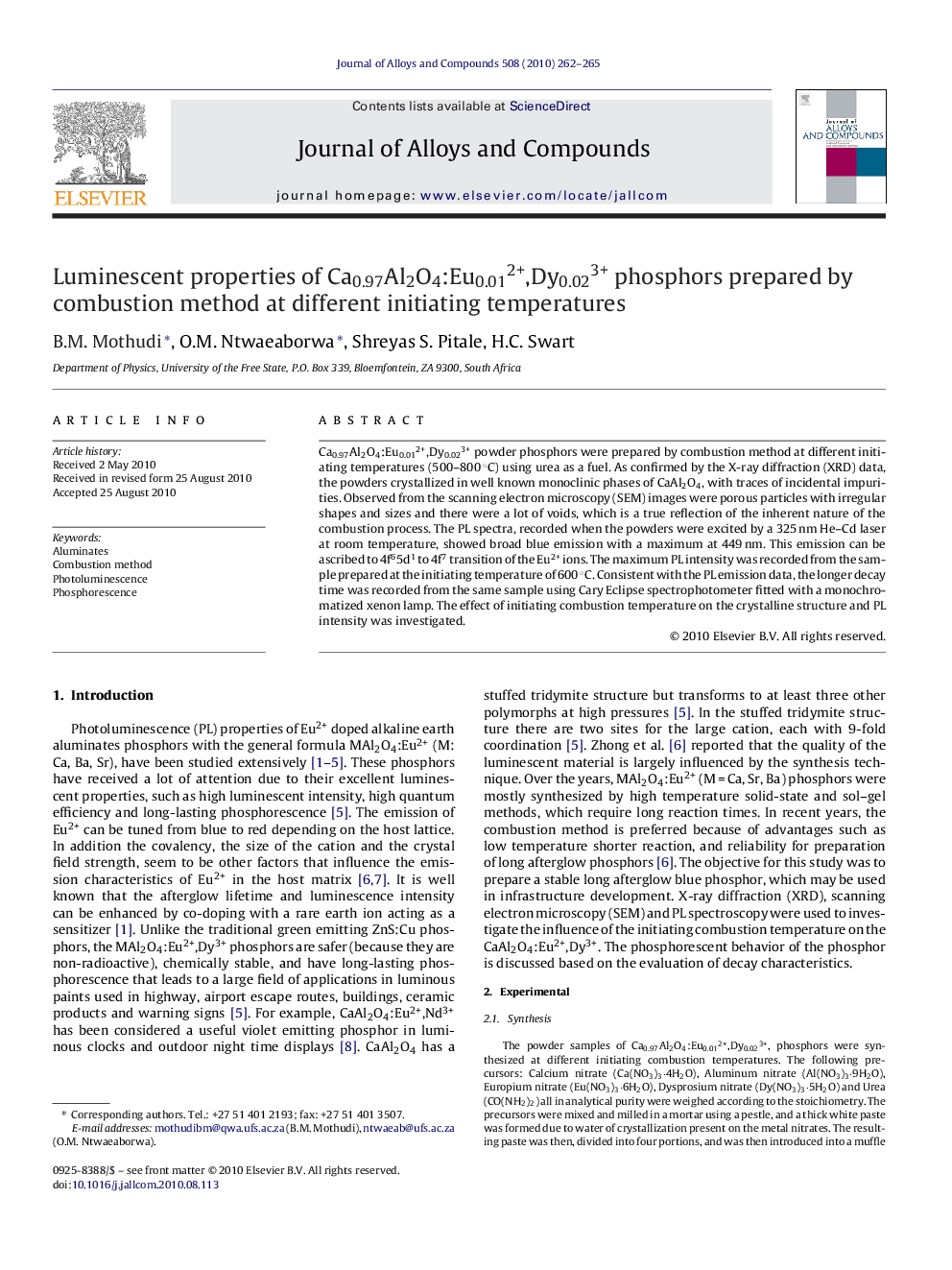| Article ID | Journal | Published Year | Pages | File Type |
|---|---|---|---|---|
| 1619235 | Journal of Alloys and Compounds | 2010 | 4 Pages |
Ca0.97Al2O4:Eu0.012+,Dy0.023+ powder phosphors were prepared by combustion method at different initiating temperatures (500–800 °C) using urea as a fuel. As confirmed by the X-ray diffraction (XRD) data, the powders crystallized in well known monoclinic phases of CaAl2O4, with traces of incidental impurities. Observed from the scanning electron microscopy (SEM) images were porous particles with irregular shapes and sizes and there were a lot of voids, which is a true reflection of the inherent nature of the combustion process. The PL spectra, recorded when the powders were excited by a 325 nm He–Cd laser at room temperature, showed broad blue emission with a maximum at 449 nm. This emission can be ascribed to 4f65d1 to 4f7 transition of the Eu2+ ions. The maximum PL intensity was recorded from the sample prepared at the initiating temperature of 600 °C. Consistent with the PL emission data, the longer decay time was recorded from the same sample using Cary Eclipse spectrophotometer fitted with a monochromatized xenon lamp. The effect of initiating combustion temperature on the crystalline structure and PL intensity was investigated.
Research highlights▶ Ca0.97Al2O4:Eu0.012+,Dy0.023+ phosphors were prepared at different initiating combustion temperatures. ▶ Broad blue emission at 449 nm was obtained from the samples. ▶ The optimum photoluminescence (PL) intensity and phosphorescence decay times were observed from the samples prepared at an initiating combustion temperature of 600 °C.
